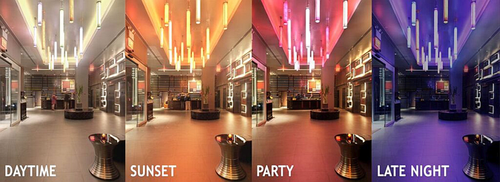LED Lighting: More Intelligent, More Beautiful, More Affordable
Continuing dramatic improvements in component packaging, intelligent driver and power architectures, and thermal performance are giving design engineers indispensable weapons in LED lighting design and creation.
January 26, 2016
LED lighting is steadily taking over the world, and design engineers who work with solid state illumination in their products know that there have been dramatic improvements in price, performance, and versatility in the LED industry. LED lighting could rise to power at an even faster clip if it were not for a few current challenges.

There’s no doubt of huge application progress being made in LEDs, driven by myriad market growth, replacing incandescent lighting in industrial, commercial, residential, entertainment, and retail venues – basically anywhere you need lights to see what you’re doing. And then, there are automotive, consumer electronics, and signage opportunities, among others. That LED will assume more than 50 percent of the total lighting market by 2018 is a foregone conclusion. Making this happen are advances in component packaging enabling smaller form factors, more lumens, and better thermal efficiency for higher power levels, as well as the move to commodity substrates.
On Jan. 28 at 2 p.m. EST, anyone who works with LED lighting won’t want to miss a free-of-charge opportunity to learn more about LED packaging, driver IC, and power architecture developments that will be presented in the Design News educational webcast, LED Lighting: Tech Trends & Design Challenges. This packed, hourlong online session will also be an opportunity for electronics designers and engineers to get in-depth knowledge about what’s happening in smart lighting and Thread, one of the more promising networking protocols vying to become the standard in the consumer and commercial Internet of Things markets.
Armed with this knowledge, attendees will be able to apply tactics toward designing higher-performing, lower-cost lighting products and smart, human-centric lighting. The presenters will be Lee Goldberg, “LEDitor-in-Chief” of the LED Design Center at Design News sister publication EDN, and influential solid state lighting industry expert Dennis McCarthy, of Northern Energy Solutions.
According to Goldberg, the maturation of LED lighting echoes that of solar power, with decreasing prices and solution costs inducing adoption and demand for application-specific advances. Nowadays, design engineers are benefitting from chip-scale and flip-chip LED architectures that reduce physical package sizes while enabling the same lumen count and simplifying integration into assemblies.
Also, new architectures in LED drivers and controllers are becoming the norm where discrete or adaptations of old solutions once existed. Growing market volumes encouraged supplier development of specialized solutions that integrate multiple functions and reduced or even eliminated the need for L/C passives. LED driver ICs continue an innovation pace for switched mode power supply topologies.
There’s also AC linear or tapped linear driver architecture, which replace magnetic components with high-voltage ICs which drive high-output LED arrays directly from AC power. We are seeing intelligent drivers with both digital and analog functionality come onto the market for growing smart lighting and IoT systems, as well. And yet another exciting development is ceramic phosphor and packaging technology.
Time for war
Arguably on the most cutting edge of the LED lighting market front is the so-called networking protocol and interoperability war occurring in connected lighting and consumer IoT right now, and webinar attendees will find out exactly what all the tumult is about. But Thread, a networking protocol built on open standards for low-power IEEE 802.15.4 mesh networks that supports IPv6 addresses, seems most likely to succeed, according to Goldberg. He will discuss Thread’s direct addressability and other key features that are critical to connected illumination’s ability to give us greater quality of light and quality of life.
Sign up for LED Lighting: Tech Trends & Challenges here, in what will be an uber-informative 60 minutes for lighting design and control application engineers on Jan. 28.
Editor-in-Chief William Ng has been in business journalism for more than 15 years, many of which have been devoted to covering manufacturing, technology, and industry.
Like reading Design News? Then have our content delivered to your inbox every day by registering with DesignNews.com and signing up for Design News Daily plus our other e-newsletters. Register here!
About the Author(s)
You May Also Like



